We’ve learned about watersheds, the animals that live in our streams, what can happen when those streams get polluted, and how we can measure that pollution.
What have you figured out about pollution near you? Here in Appalachian Ohio, one common cause of pollution is acid mine drainage.
What is Acid Mine Drainage?
Acid mine drainage, or AMD, happens after an area has been mined for coal. It is orange water or sludge. You need three things to make AMD:
- Water
- Iron Pyrite
- Oxygen
When mining companies dig coal out of the ground, other rocks and minerals get dug up and left behind. One is iron pyrite (also known as fool’s gold).
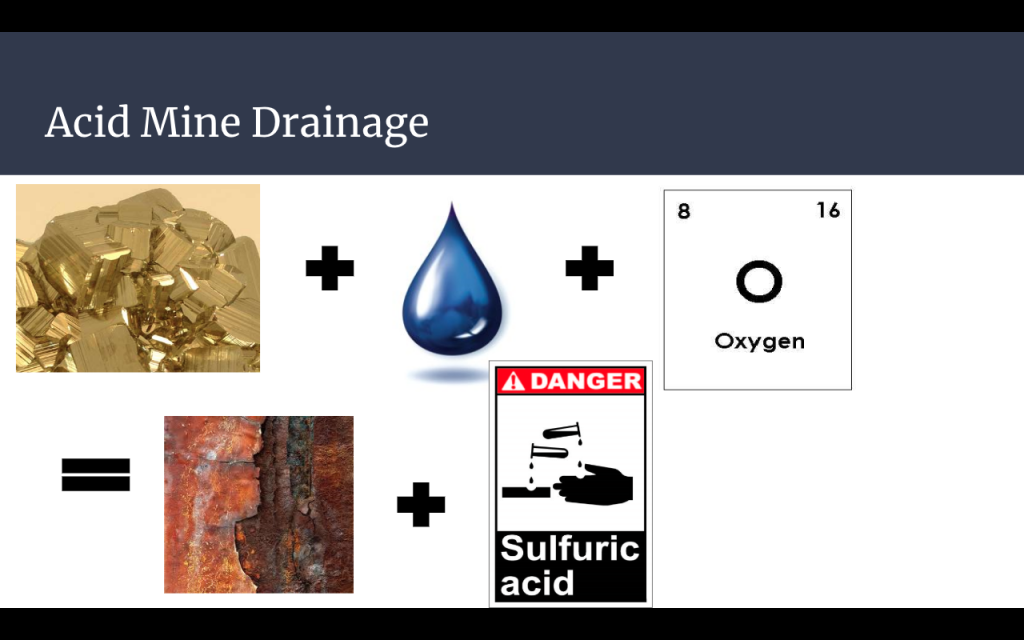
Think of what happens to a bicycle when you leave it outside in the rain: when water and oxygen from the air get on the metal, the bicycle rusts.
A similar reaction creates AMD in our creeks. When iron pyrite from mining mixes with oxygen (air) and water, it creates orange, rusty-colored AMD.
The color is not the only problem with AMD. Remember how many fish and animals can’t survive a pH that is too low or too high? AMD is highly acidic (low pH). Creeks with AMD might only have one or two kinds of fish in them. But an unpolluted creek in Ohio might have 40 to 60 species of fish!
There are some things we can do help creeks with AMD. We’ll talk about it on Friday.
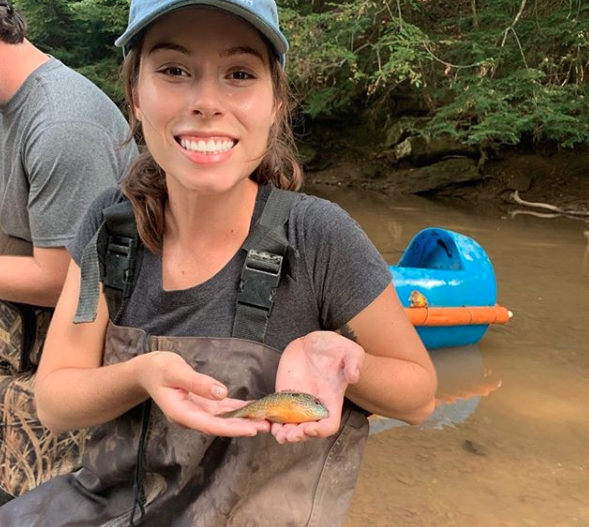
The Legacy of Coal
Most of the AMD we have today is from historic mining, 50 to over 100 years ago. Back then, there were no rules to protect water from mine pollution. When a mine closed down, no one had to clean it up.
In 1977, Congress passed the “Surface Mining Control and Reclamation Act.” It basically requires mining companies were required to clean up after themselves. That’s the rule today.
Here are some other effects of old coal mines in Ohio:
- Gob piles are piles of low quality coal and rocks that mines couldn’t use. They can also create AMD and leak other chemicals into water.
- Highwalls are cliffs made after miners removed whole pieces of hills to reach coal. They can be very dangerous because they drop off very suddenly!
- Old mine entrances are also very dangerous. Old mines are not stable (they can collapse) , and may have dangerous gases inside.
- Sinkholes can form above old underground mines. Without anything to hold it up, the ground is very weak and can collapse.
Your turn: Cookie Mining
What you’ll need:
- Chocolate chip cookies (they should either be different sizes, or have different amounts of chocolate chips)
- Toothpicks
- Paper clips
- Grid paper
- Pencil
- Play money
- Crayons, colored pencils, or markers
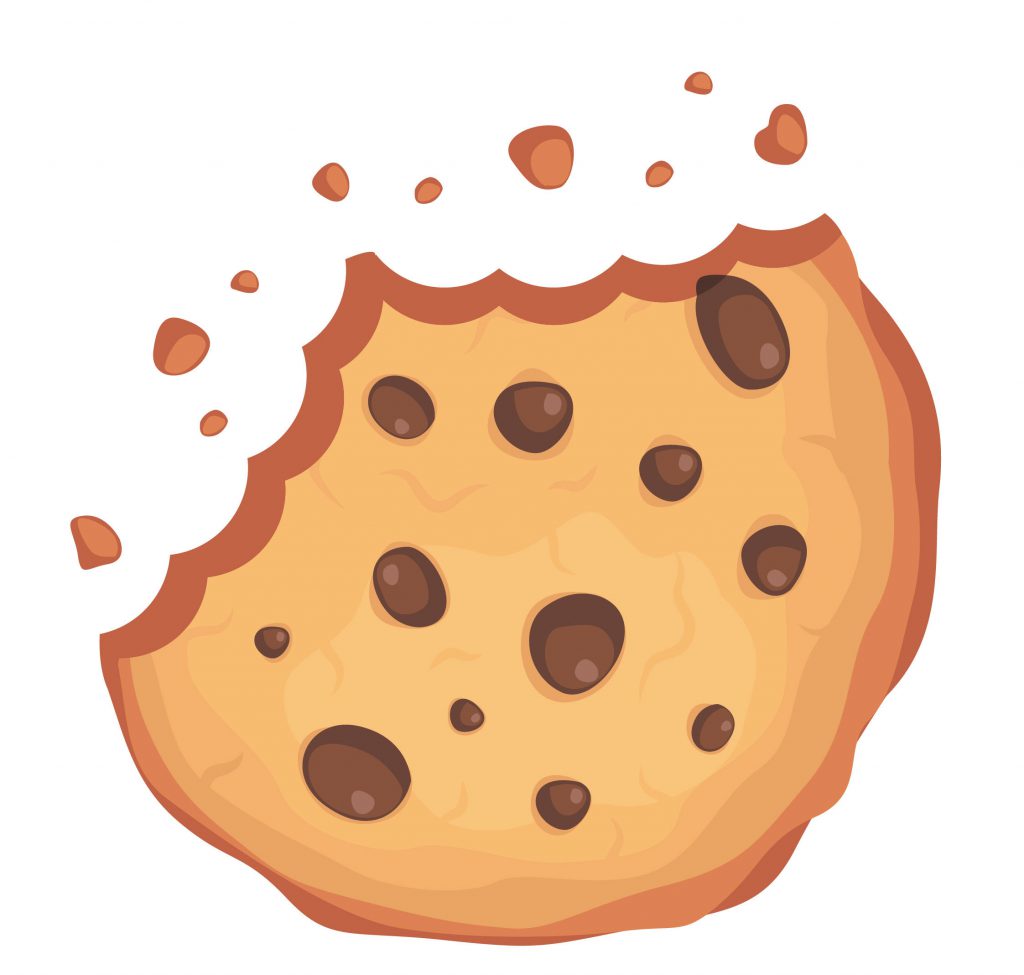
What to do:
Round 1:
Start by tracing your cookie on a piece of grid paper. Now, draw a scene around your cookie–trees, a river, a town, a farm–get creative!
You are a chocolate chip miner. Your goal is to remove all the chocolate chips with toothpicks or paper clips–your hands can’t touch the cookie!
You want to make money, and have to stop if you run out of money. Here are the rules:
| Gaining and Losing money | |
|---|---|
| Start with | $20 |
| Costs | Cookies: Large cookie = $10 Medium cookie = $7 Small cookie = $5 (If you only have one size of cookie, it costs $5). Time spent mining Set a timer–every minute you spend mining, it costs $1 Tools Toothpick = $4 Paper clip = $6 |
| Income | Each chip you remove = +$2 (Half chips can be put together to make a whole chip) |
Ready, set, go!
Look at how your cookie ended up. What does it look like? How was the land around the cookie impacted?
That was an example of unregulated mining, without reclamation laws.
Round 2:
Now, try it again, but with a new rule.
When you are done “mining”, put the remaining parts of your cookie back together in your tracing. If you leave any pieces outside of the tracing, you have to pay a dollar per square.
| New Costs | Every grid square with a cookie crumble in it = $1 |
Think about what happened:
Do you have more or less money remaining than last time? Was it easier or harder to make money?
How much of the area around the cookie had crumbs? Did round 2’s rule impact how many chocolate chips you mined?
How do you think the rule impacted the environment?
The second round represents regulated mining.
Investigate: Are there mines near you?
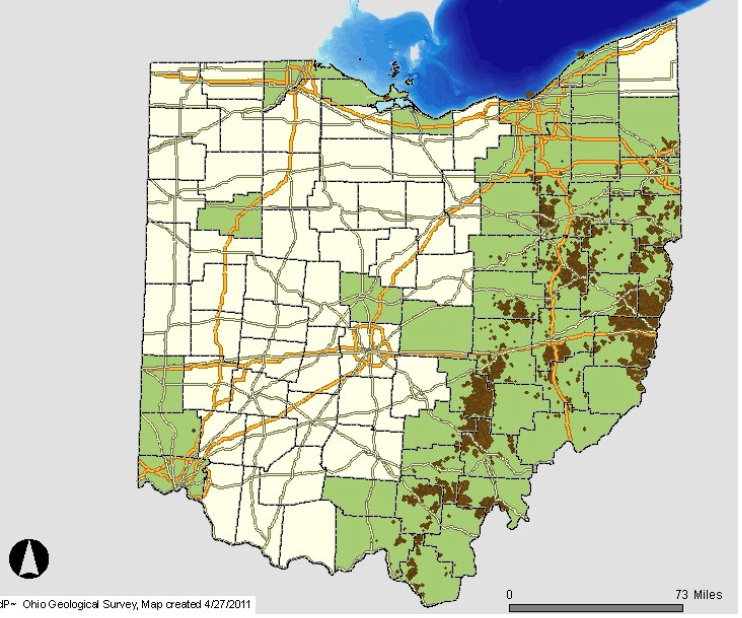
Do you live in one of the dark brown areas on this map? If so, there are abandoned old mines near you.
Although we don’t know for sure where every mine is, many of them have been mapped–right down to your street or neighborhood. Find out by going to the ODNR Mines of Ohio map.
Click on “other tools” to search for your address or town. Zoom in and out on the map. Where are the nearest mines to you?
You can see what company owned the mine, when the mining began, what was mined, and how.
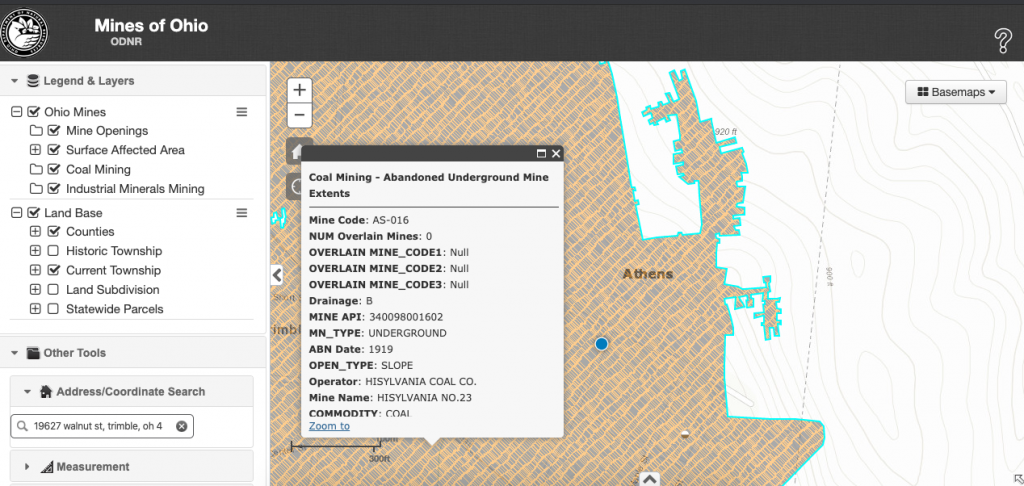
Now that you know where the mines were in your town, think about what you’ve seen around there. Can you make any connections? Have you seen any features of mining in your town? Do you think it impacts the wildlife or your life? Perhaps you have family members who know stories about coal mining in your town.
Summary
- Coal mining has shaped a lot of Ohio today. Acid mine drainage is a kind of pollution from historic mines. It makes water acidic (low pH) and full of orange iron.
- Try “cookie mining.” It shows how regulations change mining, so that it doesn’t leave as much of a mess.
- Find out where mines used to be (or still are) near you. Use the ODNR mines map and ask family members what they know. How do you think mines have affected your area?
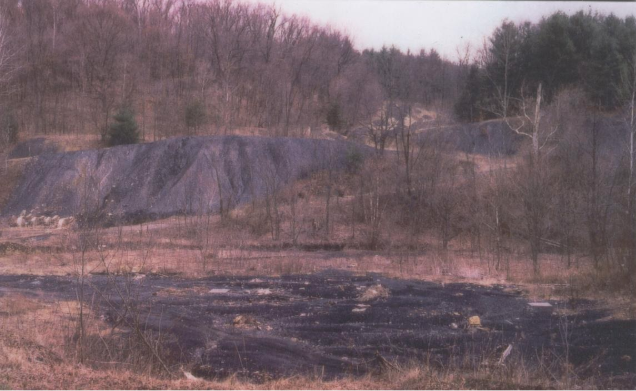
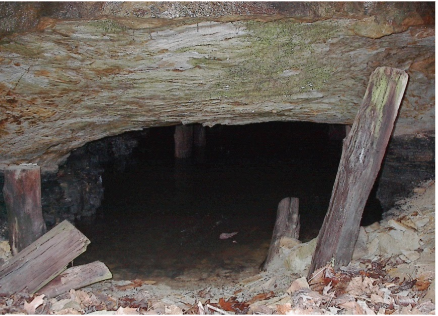
One reply on “Acid Mine Drainage”
[…] live in them than in older forests. While humans have always had an impact on their environment, our recent history has left some scars on our land that we are now trying to fix. Other choices we make can help forests grow strong again. What […]